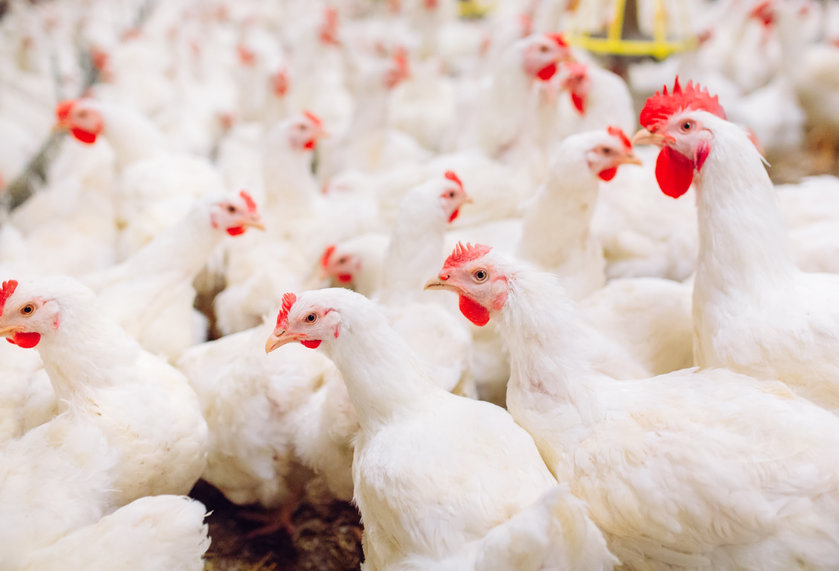BLOG
How Technology and Connectivity Can Help Improve Our Food Supply

Malaysia’s ban on chicken exports to ease domestic price increases has threatened supplies of Singapore’s beloved national dish, chicken (served with rice). Malaysia accounts for a third of Singapore’s total poultry imports. Therefore, the Malaysian poultry export ban will be catastrophic to Singaporean vendors.
Malaysia is not the first country in 2022 to turn to protectionist food policies. In April, the world’s biggest palm oil supplier, Indonesia, blocked all foreign sales due to domestic shortages, while India banned wheat exports and restricted sugar exports following soaring domestic prices.
Furthermore, Russia’s war in Ukraine worsened global food supply chains already affected by the 2020 COVID-19 pandemic and extreme weather.
Technology and improved connectivity can help mitigate these and other supply chain issues. Continue reading to learn how.

How Technology Can Help Solve Food Supply Issues
Technology can help solve food supply issues in several ways. For example, machine learning and big data tools can measure word events in real-time, forecast supply chain issues, and provide warning signs when things go wrong, such as weather impacting logistics in given regions.
Additionally, software solutions can help identify suppliers’ potential problems, such as gaps in communication, changes in payment terms, reduced insurance cover, and high turnover rates. It can also assist in mitigating the impact of such problems before and as they occur.
Technology can also help transform the global food production system, specifically in Southeast Asia, by mitigating its impact on the environment and climate. Human ingenuity, technological advancements, and scientific breakthroughs have led to an unprecedented array of tools that can transform the food system.
Below are three ways technology can help food production and supply issues.
1. Using Tech to Grow Food in Urban Settings
Farm66 is a vertical farming company growing produce in urban settings, specifically in the Hong Kong metropolis. In a densely populated, skyscraper-studded city that imports over 90% of its food, Farm66 uses technology to produce up to seven tons of vegetables monthly.
The company uses LED lights, robots, and IoT sensors to produce food on its vertical farm. It is a pioneer in using LED lighting and wavelength technologies to grow fresh produce. It also uses robots and IoT sensors for quality control and managing the 20,000 square foot indoor vertical farm.
The company partners with venture capitalists and property developers across Hong Kong to grow its vertical farms. It also aims to export knowledge into the Middle East and Southeast Asia countries like Malaysia.
2. Using Data and Technology to Boost Global, Regional, and Local Food Production and Supply
Right Farm, a UAE B2B tech start-up, uses technology to revolutionize the MENAPT region’s food supply chain. It also aims to transform how businesses source their produce by aggregating the global, regional, and local fresh produce supply through its innovative online B2B buying platform.
Right Farm leverages data and technology to optimize the processes for sourcing fresh produce while modernizing the connection between businesses and food suppliers. The company plans to expand operations into Egypt and Saudi Arabia (KSA).
Twiga, a Kenyan B2B e-commerce food production and distribution platform, uses technology to optimize the local food supply chain. It links farmers with informal traders and gives producers access to its large pool of clients in new markets. Connectivity has helped the company deal with price volatility, traceability challenges, and stock-outs.
3. Using Technology to Trace Produce along the Supply Chain
Besides bolstering the global food supply chain, technology can also help solve traceability challenges. For example, it considerably reduces the time it takes supplies and buyers to identify and trace produce in situations involving food-borne illnesses.
For example, Walmart and IBM recently demonstrated how blockchain technology could help upload certificates of authenticity for pork from China. It also reduced the time needed to trace the chain of custody of US-produced mangoes to 2.2 seconds, down from seven days.

How Reliable Connectivity Infrastructure Can Solve Food Supply Issues
Breakthrough digital technologies and improved connectivity infrastructures can positively impact the global food value chains. They can help increase production, refine inventory management, eliminate expiration issues, reduce recalls, solve traceability challenges, monitor spoilage, and mitigate problems.
As a result, reliable satellite connectivity providing voice and internet connection to previously unreachable areas by traditional terrestrial networks is now necessary for businesses adopting technology during production and through the supply chain.
Improving the performance and efficiency of the global food supply chain is central to reaching the United Nation’s Sustainable Development Goals. Yet, unfortunately, the world is facing unsustainable food production and poor supply chain and consumption practices.
Today’s food production and distribution system is the primary driver of deforestation, biodiversity loss, and greenhouse gas pollution. Ironically, the world’s smallholder farmers, who produce most of our food, are the most malnourished and poorest groups. It does not help that climate change could force many of them into extreme poverty due to impacts on agriculture and food security in a few years.
Therefore, improving the global food production and distribution system is critical to sustainably feeding the growing human population while raising farmer incomes, helping them thrive, and protecting them from climate change.
However, smallholder farmers face challenges in creating mutually beneficial links with buyers in food chains. Understanding the requirements of all players and creating and nurturing strong, mutually-beneficial partnerships can help unlock these problems. It also helps to solve the issues preventing large consumers from buying directly from small suppliers, such as:
- Lack of standard quality
- A limited range of products
- Unreliable delivery solutions
- Unexpected price variations
- Higher than expected delivery costs
- Failure to pay agreed or fair prices
- Unrealistic terms of payment
The industry can harness digital technology such as the Internet of Things (IoT), automation, machine learning, and artificial intelligence to deliver operational changes. Technology can also arm farmers with new insights and capabilities, increased visibility, efficiency, and higher productivity across their entire food production and distribution journey.
These technologies rely on telecommunications and internet connectivity to send and receive data and information and exchange ideas. Therefore, overcoming connectivity challenges in remote areas of Malaysia where most food production occurs is paramount.
The Future of Malaysia's Food Supply Chain
Increased connectivity allows Malaysia to claim a bigger chunk of the Southeast Asia digital and agricultural economy. Allo Technology is dedicated to providing businesses in the farming and supply chain industries with the connectivity they require to implement reliable infrastructures. Contact us today.
